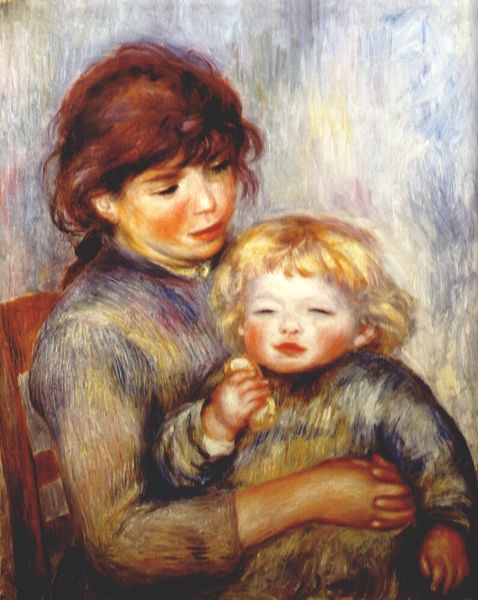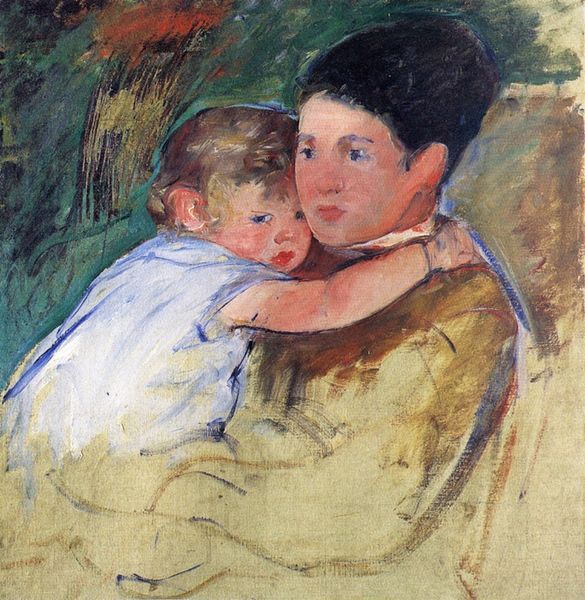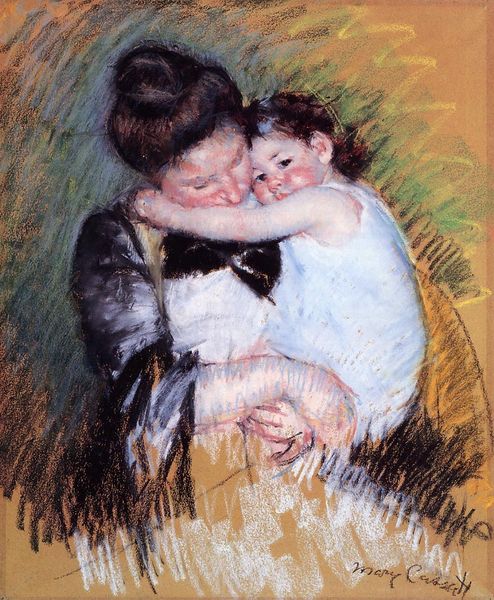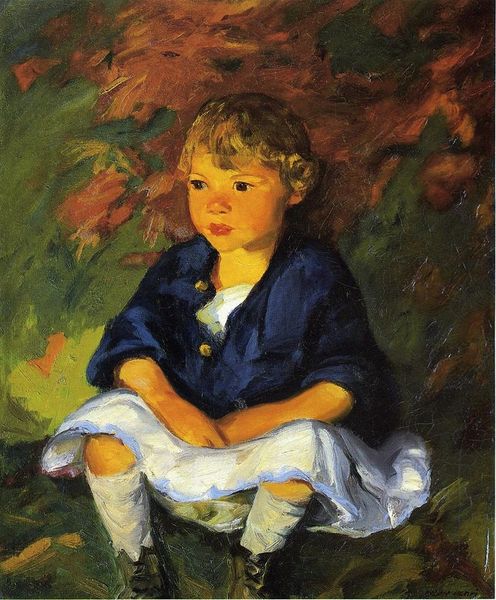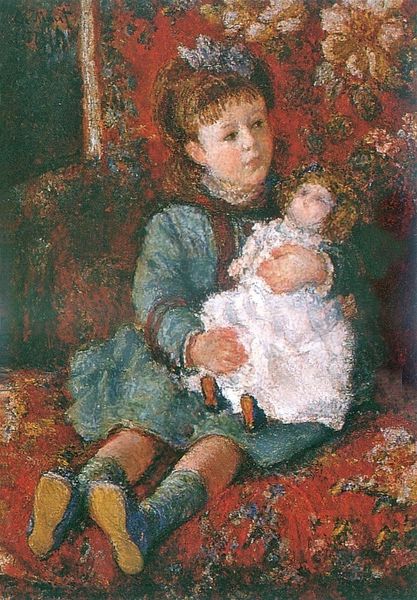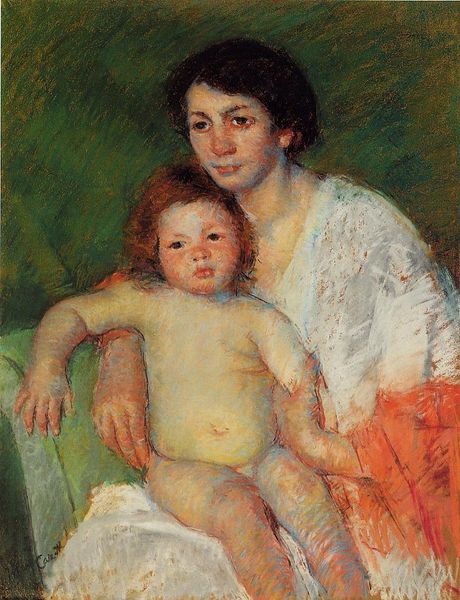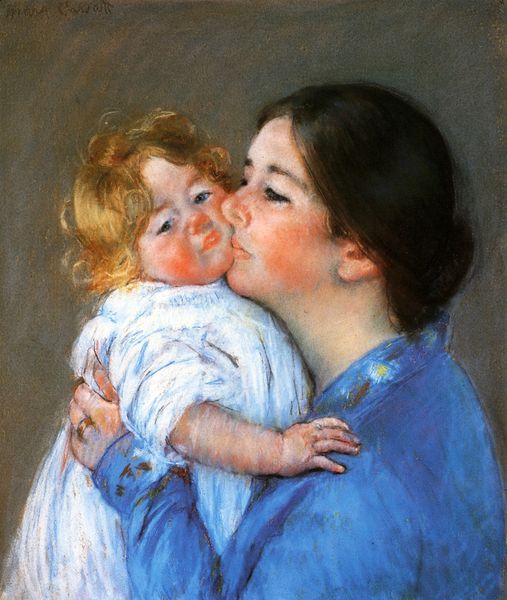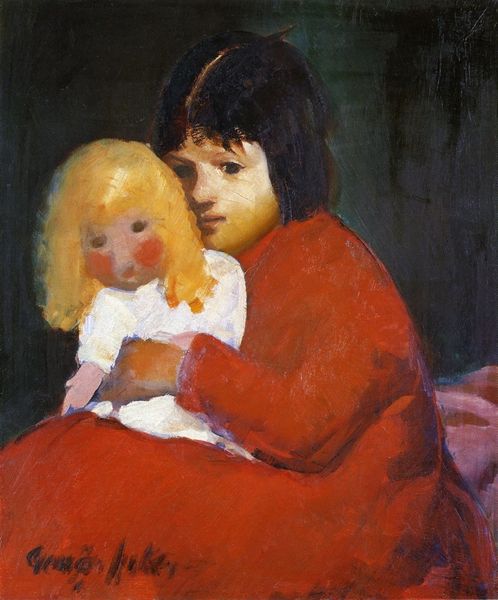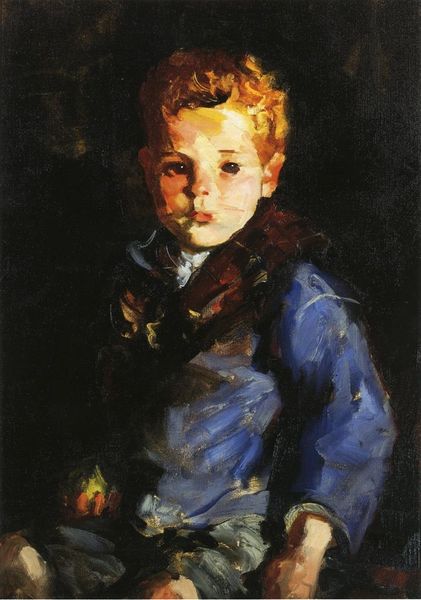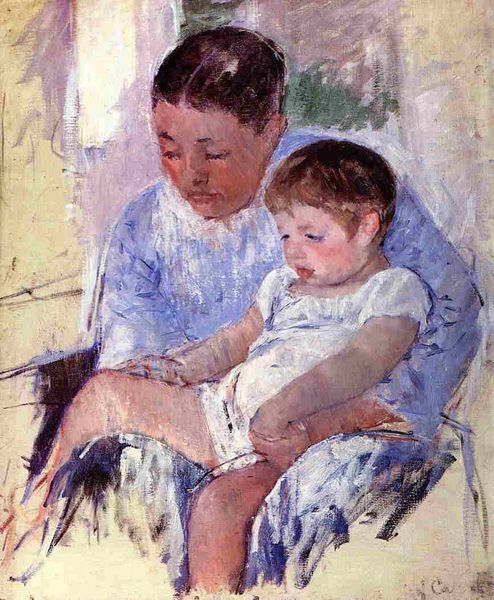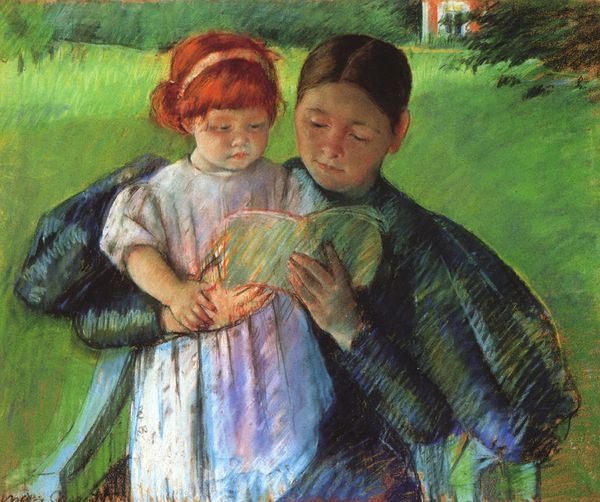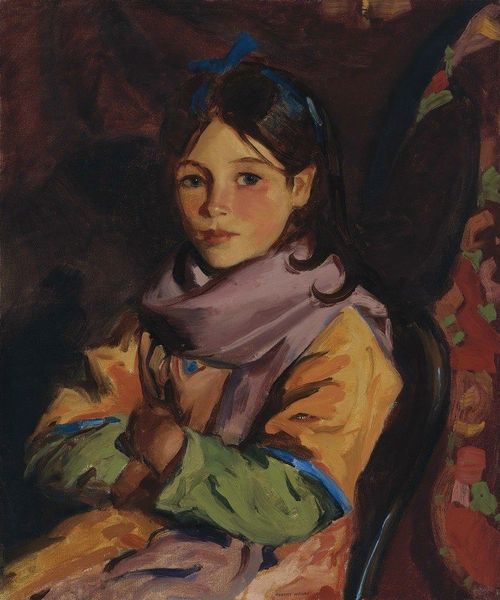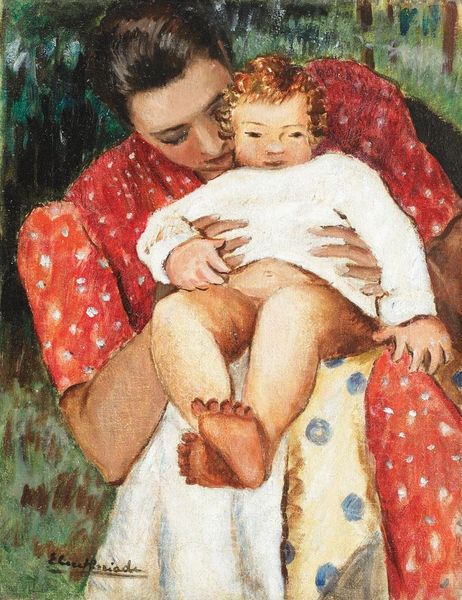
oil-paint, impasto
#
portrait
#
oil-paint
#
oil painting
#
impasto
#
group-portraits
#
ashcan-school
#
realism
Copyright: Public domain
Editor: We’re looking at Robert Henri’s “Sammy and His Mother,” painted in 1915, rendered in oil on canvas. It has such a tender, almost protective feeling. What do you see in this piece? Curator: For me, this painting is a poignant intersection of motherhood, identity, and the sociopolitical climate of the early 20th century. Considering Henri's association with the Ashcan School, known for depicting everyday life, it’s tempting to see it simply as a portrait of domesticity. However, I want to suggest we consider it within the historical context of immigration and racial representation. Notice how the mother's dark hair and complexion contrast with Sammy's lighter features. How might this be read in relation to notions of assimilation and the complex racial dynamics of the time? Editor: That's a perspective I hadn't considered. I was just seeing the universal theme of maternal love. Is the mother's ethnicity really significant to your reading? Curator: I think it's impossible to ignore. Henri, like many artists of his time, was engaging with the rapidly changing demographics of American cities. By depicting a mixed-race family, is he making a statement about the evolving American identity? Or perhaps he's highlighting the anxieties surrounding racial mixing prevalent at the time. The brushstrokes, the composition, the very gaze of the subjects, all contribute to a larger narrative. Editor: So you’re saying the painting can be interpreted as a kind of social commentary, beyond just being a snapshot of a mother and child? Curator: Precisely. By examining the artwork through the lenses of race, gender, and class, we gain a deeper understanding of the social forces that shaped its creation and its ongoing relevance. It's a beautiful example of how art can reflect and refract the complexities of human experience. Editor: That gives me a lot to think about – thank you for opening up a new way to view this work. Curator: Absolutely, the beauty of art lies in its ability to provoke these crucial conversations.
Comments
No comments
Be the first to comment and join the conversation on the ultimate creative platform.
